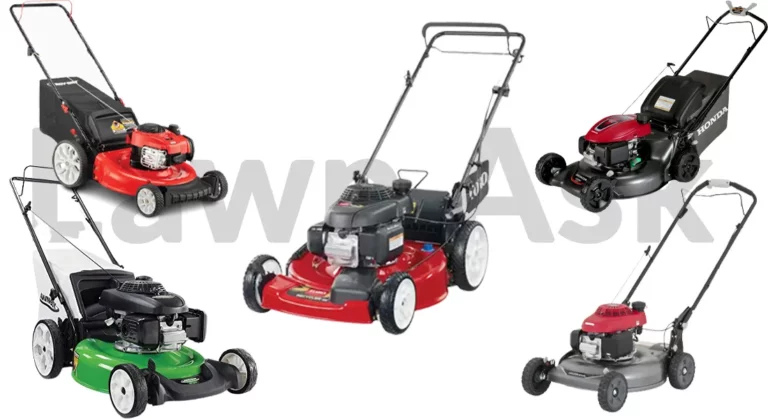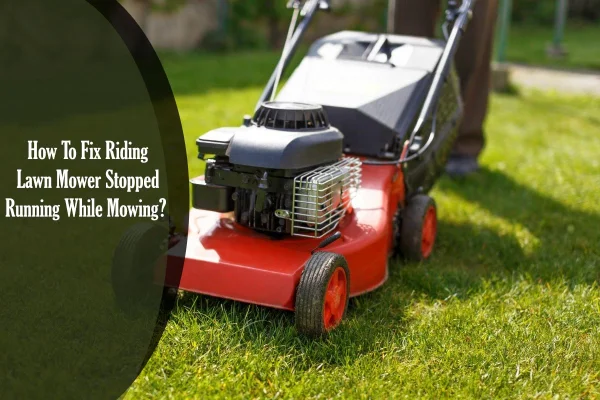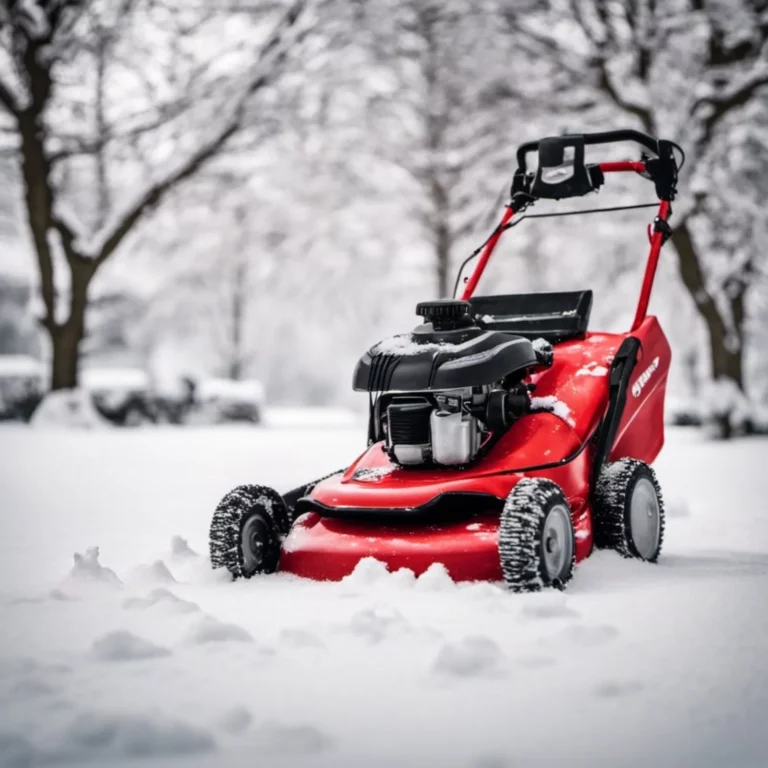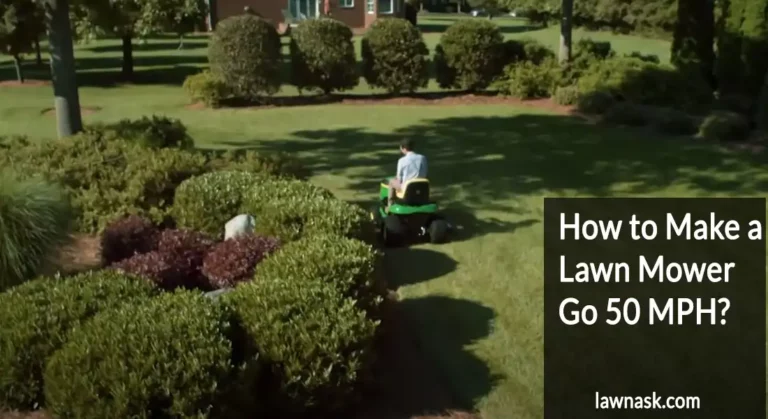Understanding the Pros and Cons of Using Mulching Blades!
Mulching blades are an effective way to maintain a lawn and keep it nourished, but not every grass requires the same sort of blade. That is why it is necessary to choose the proper lawnmower blade for your yard.
However, how can you tell if mulching blades are good for you?
An in-depth grasp of the potential pros and cons of mulching blades can help you choose the right solution. But before going into those details, let’s first define a mulching blade, its characteristics, and how it works.
So, continue reading the following article to learn all the necessary information.
A Quick Glance at the Pros and Cons of Mulching Blades:
| Pros or Benefits: | Cons or Drawbacks: |
| Feeds the Grass while Enrich the SoilIncrease Efficiency with Quicker Decomposing TechniqueReduce Grass ClippingsLower MaintenanceImproves Lawn Health | Blocks the Mower & Inconvenient for Oversized/Taller GrassesLow Rate of Discharge & Increased Initial CostMight be Time-ConsumingDeprived of AerationPest Infestation Is Possible |
Introducing Mulching Blades:
Mulching blades, often known as all or multi-purpose mower blades, are one of two main types of mower blades.
These blades are an excellent method to save time, effort, and money when it comes to lawn maintenance.
What’s a Mulching Blade?
A mulching blade is a lawnmower blade that creates mulch when fitted to your mower.
Mainly, a mulching mower blade is made up of three layers of blades, like a three-in-one blade, to perform three functions: mulching, bagging, and discharging. Two blades are positioned diagonally in a mulching blade assembly to aid in mulching.
So when should you use a mulching blade for your lawn maintenance?
Use it when you need to mow your lawn every three to four days, and your grass is not overgrown or thick. Otherwise, mowing overgrown grass can cause a clog beneath the mower deck or cause the grass to build up.
Characteristics:
Mulching blades have three key characteristics:
- Producer of Natural Fertilizer: Mulching blades produce mulch, which acts as a natural fertilizer, and spread it on the grass.
The grass clippings then degrade in 4-5 days, releasing nutrients such as nitrogen, phosphorus, and potassium. - Three-in-One Function: As previously said, a 3-in-1 mulching blade can mulch by cutting grass into little clippings repeatedly.
If your mower has a bag, this blade can bag the grass clippings, and if your mower lacks a bag, the mulching blade will dump clippings down the discharge chute. - Curved Design and Split Airflow: Mulching blades are curved on the edges to bring in more grass and allow the mower to cut grass effectively.
However, the edges of mulching blades, not the teeth, oversee cutting grass clippings, as the teeth just bring in airflow and push grass toward the edges.
The curving form and teeth of these blades showcase the split airflow and teeth.
What Are the Pros and Cons of Mulching Blades?
Mulching blades provide benefits for the ecology, but they can have drawbacks. So, it is important to weigh the pros and cons before making a decision.
Pros or Benefits of Using Mulching Blades:
Here are the pros of using a mulching blade:
1. Feeds the Grass while Enrich the Soil:
Mulching blades make the grass smaller, resulting in a cleaner and neater atmosphere. Grass cuttings degrade even as quickly.
Since the majority of the criteria have been met and the little grass clippings break down to make natural fertilizer, you don’t need to fertilize the lawn. This method feeds the grasses while also enriching the soil.
2. Increase Efficiency with Quicker Decomposing Technique:
Mulching blades are designed to shred grass clippings and properly distribute them around the lawn.
This allows the grass to decompose more quickly, releasing nutrients back into the soil.
This technique promotes grass that is more sustainable, healthier, and stronger, requiring less water and fertilizer.
3. Reduce Grass Clippings:
Mulching blades break down grass clippings and provide nutrients to the soil, reducing the number of grass clippings left on the lawn after mowing.
These sharp blades also give a cleaner cut, lowering the danger of harming the grass and making it susceptible to disease.
Related Post: Lawn Mower Blades Won’t Engage Causes and Troubleshooting Steps!
4. Lower Maintenance:
Mulching blades can assist in reducing lawn care by acting as a natural fertilizer and conserving water.
They also give the lawn a neater, more uniform appearance since the clippings are finely diced and evenly scattered around the ground. This can improve both the aesthetics and health of the lawn.
5. Improves Lawn Health:
By delivering crucial nutrients, mulching blades improve grass health. When grass clippings are cut into little bits and left on the lawn, they decay more quickly and return nutrients to the soil.
This improves soil structure and fertility, promoting healthy grass growth. Your grass will thicken, green up, and grow more disease and insect resistant over time.
Cons or Drawbacks of Using Mulching Blades:
Here are the cons/drawbacks of using mulching blades:
1. Tends to block the Mower & Inconvenient for Oversized/Taller Crasses:
One of the major issues of using a mulching blade is that it tends to clog the mowing equipment, making it harder to reshape overgrown grass.
Another notable drawback is that the mulching blades are only good at cutting smaller to medium-sized grass clippings.
Therefore, if your lawn has oversized or thicker grass that needs to be cut, a standard or regular blade will come to your rescue.
2. Low Rate of Discharge & Increased Initial Cost:
Mulching mowers or bagging attachments can be used to improve grass discharge. But the discharge rate is low due to the curved angles.
So, remember that Mulching blades are not efficient at discharging grass due to clumping and clogging.
Mulching blades may cost more than regular mower blades due to their special features that allow them to cut grass clippings into smaller bits and distribute them evenly across the lawn.
But they also reduce fertilizer and water consumption, which can save money in the long term.
Related Post: Mulching Blades vs Regular Blades: Choosing the Right One for You
3. Might be Time-Consuming:
Mulching blades can take longer than standard blades since they need to make more passes over the grass to ensure that the clippings are cut into small enough bits. For anyone with limited lawn care time, this can be a drawback.
4. Deprived of Aeration:
Mulching blades can obstruct air movement in the soil, causing compaction that leads to decreased crop yields and poor soil health.
It can also increase flow and erosion, which can be a problem for lawns that see a lot of foot traffic.
Product Recommendations:
How Much Does A Mulching Blade Cost?
Note that the actual price will vary depending on the blade size, the brand of the blade, and the local dealer or retailer rate.
But you can get an overall pricing concept of top-rated mulching blades from the below chart:
| Mulching Blades | Price |
| Oregon 3 Pack G3 Gator Mulching Blades | ($38.00 – $44.85) |
| Maxpower 561713XB Commercial Mulching 2-Blade Set | ($14.99 – $37.99) |
| Maxpower 331528B Mulching Blade | ($19.99 – $39.99) |
| MTD Genuine Parts (942-0741A) Mulching Blade | ($25.99 – $34.25) |
| Rotary Copperhead Mulching Mower Blades | ($32.09 – $41.95) |
Pros And Cons of Mulching Blades – FAQs
Is it better to use a mulching blade or a standard blade?
Yes. Mulching blades are ideal for lawns that are mowed every three to four days.
Can you use mulching blades that discharge to the side?
Yes, you can.
High lift or mulching blades: Which one is better?
High lift blades provide better suction and airflow, while mulching blades cut the grass into smaller pieces and disperse them evenly, improving the health of the lawn and reducing maintenance. However, the choice between these blades will depend on individual needs and preferences.
Can mulching blades be used on any mower?
Mulching blades are acceptable by most mowers, but not all. Mulching should be done with the proper tools, such as a mulching blade, bagging blade, or side discharging blade to ensure a clean lawn.
Related Posts:










